Ryan Hall's Blog, page 248
June 3, 2016
How Runners Can Work on Landing Softly
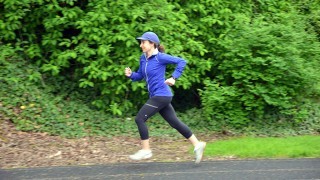
Photo: Alice Peters Diffely
Land softly while running. It’s sound advice. And certainly not new.
But how do you put it into practice? To answer that question, three experts shared their approaches to helping runners improve their technique and touch down lightly.
Emily Schwartz, M.D., a sports medicine physician and avid runner in Los Angeles, treats runners with all types of running injuries. Her clinical observations bear out what the research shows—that when we strike the ground with less force, we reduce our risk of injury.
RELATED: Harvard Study Examines Why Some Runners Don’t Get Injured
“Gait retraining is a huge part of what I talk to my patients about,” Schwartz says. “If you think about a horse almost pawing the ground, your landing should be like a very quick, light touch.”
She says that heel strikers tend to land with their heel out in front of them. “It’s like putting on the brakes with every step—the forces get sent up their leg rather than going backward,” she explains.
Her advice: focus on increasing your cadence (number of strides per minute), shortening your stride, and landing on your midfoot underneath your hips—all of which, she says, work together to decrease the forces that go up through your body, therefore saving energy and reducing impact on joints.
Ken Mierke, an exercise physiologist and running coach in Falls Church, Va., teaches those principles and others through Evolution Running, a system of techniques he developed in 1999 to help runners run more efficiently with fewer injuries.
“Learning to run softly can make running a more enjoyable experience as well as improve your performance,” Mierke says.
The first step is learning to land with your foot underneath you, he explains. To begin, he suggests running in place.
“When you’re running in place, you can’t land with your foot in front of you,” he says. “I like to have people run in place on a treadmill with the treadmill turned off and then speed it up a couple of tenths of a mile-per-hour about every 20 seconds. So every time you speed it up, your heel will go back a little farther to generate a little bit more propulsion while never letting your foot land in front of your hips.”
Propulsion should come from pulling back from the hip and using your butt muscles, which will move you more directly forward, instead of straightening the knee and using your quads, which will propel you about two-thirds up and one-third forward, Mierke explains. Your quads should hold you up, but not propel you.
“The more you elevate off the ground, the longer gravity has to carry you down and the harder you’re going to hit,” he says.
Mierke says a common misconception is that a long stride is about opening your legs wide. “Good runners have a long stride from pushing off the ground powerfully from the moment the foot is weight-bearing, not from opening their legs to a wide angle,” he explains.
To increase your cadence, he advises getting a clip-on metronome or using an iPhone metronome app and setting it to 180 strides per minute, the optimal step rate for most runners. “Usually within a few months, people get their turnover up and it becomes natural,” he says.
Another popular running method that promotes landing lightly is Chi Running, developed by Danny Dreyer in 1999. Inspired by tai chi, the idea is to use your core to run more efficiently and effortlessly.
Alice Peters Diffely, a Chi Running master instructor and longtime distance runner, discovered Chi Running in 2004 after several years of being sidelined from running due to a frustrating cycle of lower leg injuries. Chi Running not only got her back to running without pain, it changed her career path. Having previously practiced law, in 2007 she launched Running Mindfully, Inc., in Portland, Ore.
“In Chi Running, we take our clients through a series of lessons which are holistic, and most, if not all of them, can play a role in helping runners to land more softly,” Diffely says.
One of the first lessons she teaches is on posture during which clients learn to both align and relax their bodies. She says to think of “a needle in cotton—a strong center with relaxed peripherals.”
“If you can relax your upper back and shoulders, your lower back and hips, and all the way down through your calves, ankles and feet, that in and of itself is going to help you land more softly than if you’re a ball of tension,” she says.
Once clients learn to improve their posture, they incorporate a slight forward lean, which promotes gravity-assisted forward movement and a midfoot landing. They also learn a new way to lift their heels.
“The idea is to simply let your heels float up behind you rather than aggressively pushing off with your toes,” Diffely says. “It avoids overworking the calves and the muscles on the soles of your feet.”
Like Mierke, Diffely recommends setting a metronome from 170 to 180 to increase step rate and then lifting your heels with the beep.
Another Chi Running tip for a softer landing is to “imagine a string drawing up gently on the crown of your skull, suspending you from above and allowing your feet to touch down very lightly as you skim across the surface of the earth,” Diffely says.
Finally, when implementing any new running technique, the key, say the experts, is to progress gradually and do repetitive form drills to build specific muscular strength to maintain your improved form.
RELATED: Drills for Building Running Strength, Cadence and Speed
Cate Hotchkiss is a freelance writer, marathoner, and mom who lives in Hood River, Ore. She blogs at gorgegirlruns.blogspot.com.
The post How Runners Can Work on Landing Softly appeared first on Competitor.com.
Man Born with No Arms or Legs Finishes Calgary Marathon in 4:23
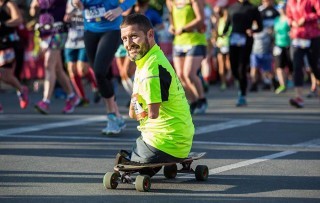
Chris Koch propelled himself on a longboard to complete the Calgary Marathon on May 29.
Every runner knows how hard it is to complete a marathon. No matter how hard you train, it’s always a monumental challenge on race day.
Canadian Chris Koch is all about challenges. The 37-year-old motivational speaker from Alberta who was born with no arms or legs, says he’s more afraid of regret than he is of failure. And that’s one of the reasons he took on the challenge of participating in the Calgary Marathon on May 29.
He pushed himself on a longboard through the 26.2-mile course with his partial right leg and reached the finish line in 4 hours, 23 minutes and 12 seconds. He admitted he finished faster than he thought, considering his half marathon PR is just under 2 hours. It was his first marathon, but he says it won’t be his last.
“The experience as a whole was absolutely incredible,” Koch said Friday by telephone. “Runners were very supportive. There were a lot of congratulations and support out there, both during the race as well as afterwards. I definitely felt like I was part of the group of runners out there.”
The first part of the course was hilly, which meant for strenuous climbs but fast descents. Koch said he made it a point to regulate his speed on the downhills so he didn’t get in the way of other runners.
“It was a lot of fun,” Koch told Canada’s Global News. “It was a pretty good workout; there were some good uphills that really took a lot out of me. I’m pushing with one leg, so my leg is pretty sore.”
Koch was denied entry to the Los Angeles Marathon in March (because the race organizers believed his longboard might cause safety issues), but when the Calgary Marathon got wind of it, he was immediately offered an entry.
Koch entered the race with the goal of raising $10,000 for Calgary’s Inn From The Cold, a homeless shelter geared toward providing children and families a platform to turn around their lives. (Interested donors can contribute to the fund through the end of June.)
“I wanted to do something for the city of Calgary and with the economic climate here in Southern Alberta being a bit softer, homelessness is a growing situation,” he said. “It’s great to do these challenges, but it doesn’t quite feel complete unless the support for the charity is realized.”
Koch has done several half marathons and has also climbed both the 627-foot Calgary Tower (802 steps) and Toronto’s CN Tower (1,815 feet, 1,776 steps). One of his next big adventures on the horizon will be a trek to Mt. Everest base camp next April to raise money and awareness for Nepalese people with disabilities.
“It was an amazing day that was made even better by having my girlfriend Ally, my mom, and other family in Georgie and Todd participating in the 10K,” Koch said on Facebook after his run. “An additional thank you to other friends and family that came out to support me. I also want to give a shout-out to fellow Nantonite, Andrea Glover who won the women’s division. Finally, a huge thank you to to everyone who has been so supportive in all that I’ve done. You’re all so incredible.”
Brian Metzler is the editor of Competitor.com and Competitor magazine.
Click here to read the free digital edition of Competitor.
The post Man Born with No Arms or Legs Finishes Calgary Marathon in 4:23 appeared first on Competitor.com.
Never Forgotten—Catia Kelly Runs for Her Husband at Rock ‘n’ Roll San Diego
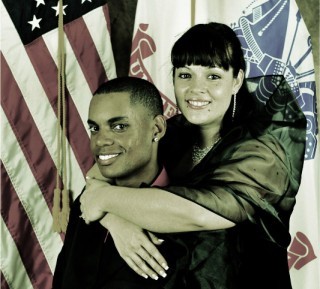
They had plans, Army Staff Sergeant Nigel Kelly and his wife, Army Sergeant Catia Kelly. After serving his third deployment—two in Iraq, the last in Afghanistan in 2011—Nigel planned to submit papers to join the Special Forces.
Catia?
“I was going to have kids, be a homemaker while he fulfilled his career,” she said. “When he retired, he was going to buy me a boat.”
Those dreams were shattered on June 25, 2011 when the 26-year-old Nigel was killed during a counterinsurgency assault mission near the Pakistani border.
Nearly five years later, Catia is still moved to tears when discussing her late husband.
“I haven’t really dealt with it yet,” she said.
To help cope with the pain, Catia will run the Suja Rock ‘n’ Roll San Diego Marathon on June 5. She’ll be one of nine “gold stars” representing wear blue: run to remember, an organization that honors military men and women who died in service.
All nine “gold stars” lost family members who died while serving the Army, Navy or Marines.
Catia Kelly is now 32 years old. She was granted an honorable discharge from the Army shortly after her husband’s death and moved to Cameron, N.C. She’s a student at Fayetteville State University, majoring in accounting and finance. She’s scheduled to graduate in May of next year.
Kelly moved to Cameron because it’s near Fort Bragg, where Nigel would have been stationed while training to enter the Special Forces.
The 6-foot-4 Nigel, a foot taller than his wife, was a workout fanatic.
“He wanted to have kids and keep up with them,” Catia said. “And he wanted me to be able to keep up with them. There were no shenanigans with that man.”
After dinner, they’d go on walks. They biked together. During his Afghanistan deployment, Nigel paid for Catia to work out with a personal trainer three times a week.
“He was my coach, my motivation,” she said.
Before being selected by wear blue: run to remember to tackle the Suja Rock ‘n’ Roll San Diego Marathon, Catia was hitting the gym five days a week. She was more into weights than cardiovascular workouts.
She logged 30 minutes on the treadmill three times a week.
Training for the marathon has not been easy. Her workouts started by alternating three minutes running, one minute walking.
“That was my life-saver,” she joked. “I looked forward to that one minute.”
Her last long run reached 20 miles.
“I’m not going to lie, I died a little bit,” she said. “My body felt like it was done, like every bone in my feet were shattered. My hands were shaking and swollen. My breathing was straight, maybe because I was running so slow I might as well have been walking.”
Catia will draw inspiration when she reaches 4½ miles into the marathon. For about a one-mile stretch at that point people will be holding large U.S. flags as part of the wear blue: run to remember program. Many of the people holding flags will be family members of loved ones who died during military service.
Catia will be thinking of her late husband throughout the 26.2-mile journey.
“If he were here,” she said, “he’d do it with me.”
Nigel earned two Bronze Stars for valor in the Army.
“I just hope he’s not forgotten,” she said. “That’s all I think about. I want him to know he’s still alive, even though he’s gone.”
Catia hopes the marathon will be emotionally cathartic.
“I think if I can deal with the physical pain, I can heal a little bit.”
The post Never Forgotten—Catia Kelly Runs for Her Husband at Rock ‘n’ Roll San Diego appeared first on Competitor.com.
Run Your Fastest 5K: Resistance Training Routine
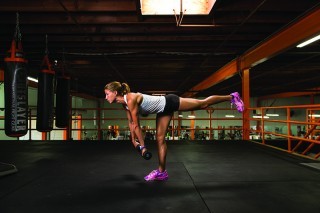
Once a week—twice if you have time—perform a short bodyweight or free-weight resistance-training routine. These exercises force your nervous system to recruit all your muscle fibers both simultaneously and explosively, mimicking the demands of the 5K start. This isn’t about building bigger muscles. It’s about teaching your body efficient control of your muscle fibers.
RELATED: Run Your Fastest 5K
All Photos: Nick Isabella
Photo Gallery
1 of {count}
Back to Start
View Larger Image
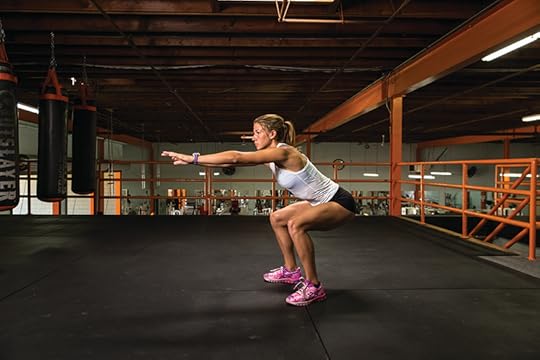
Squats
Stand straight with feet hip-width apart, toes pointed slightly out, arms at your sides. Bend your knees, keeping your thighs parallel to the floor while bringing your arms up, extended in front of your shoulders. Then push up with your quads to return to your starting position. Start with five reps, build to 10–15.
View Larger Image
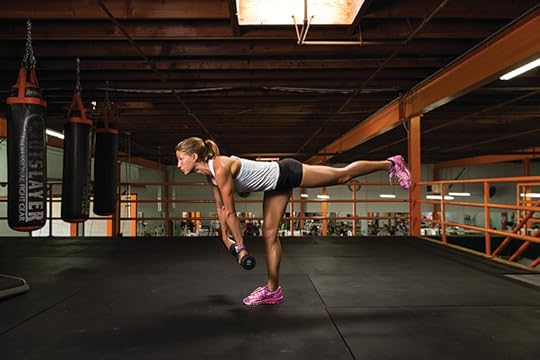
Single-leg deadlifts
Hold a 10- to 20-pound dumbbell in both hands. Stand straight with your right knee slightly bent. Lower the dumbbells to the floor, keeping your arms straight, and be sure that your back is locked as your left leg kicks back. Keep your head up and aim to maintain a straight line between your left shoulder and your left leg. When the dumbbells get close to the floor, pull your arms up away from the floor and return to a standing position. Repeat this sequence 10 times, then switch and do the same on your left leg.
View Larger Image
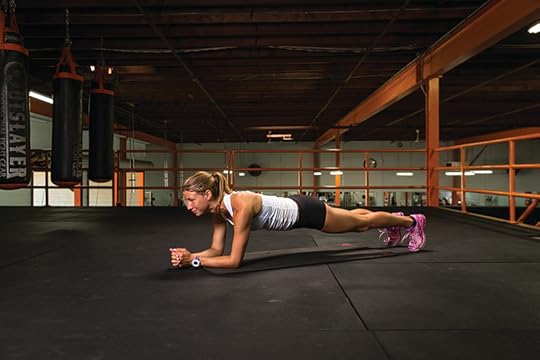
Planks
Assume a modified pushup position with your elbows bent 90 degrees and both forearms resting on the floor. Position your elbows directly underneath your shoulders and look straight at the floor. Your body should form a perfectly straight line from the crown of your head to your heels. Your feet are together with only the toes touching the floor. Hold this position for as long as you can, concentrating on keeping your abdominal and low back muscles tightened to prevent bending at the hips.
View Larger Image
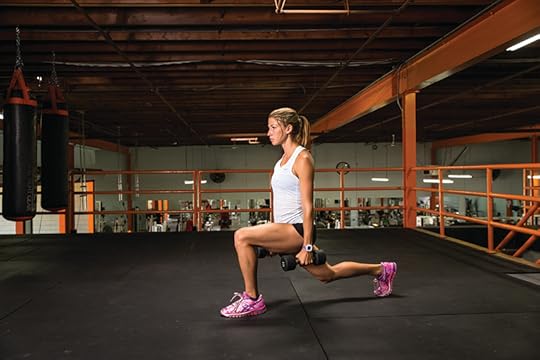
Lunges
Standing up straight with a 15- to 20-pound dumbbell in each hand, lunge forward with your right foot, keeping your arms (and weights) down by your side. Land on your heel, and make sure your knee is directly above the front of your foot. Repeat five times on each leg. Next, from a standing position, lunge to your right, keeping your left leg straight and torso upright as you step down heel first with your right foot. Do five reps leading with your right leg, then five leading with your left. Finally, step backward with your right leg, keeping your left leg firmly planted in front of you, with your left knee directly over the front of your foot. Do five reps leading backward with your right leg, then five leading with your left.
View Larger Image
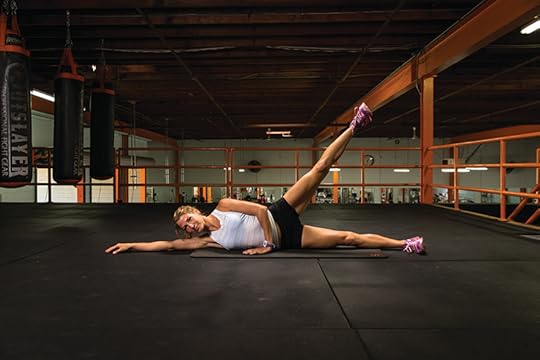
Side leg lifts
Lie on your side, legs stacked, with your head resting on one arm. Lift your top leg to 45 degrees in a smooth motion, then bring it back down. Do 10–20 reps with each leg.
View Larger Image
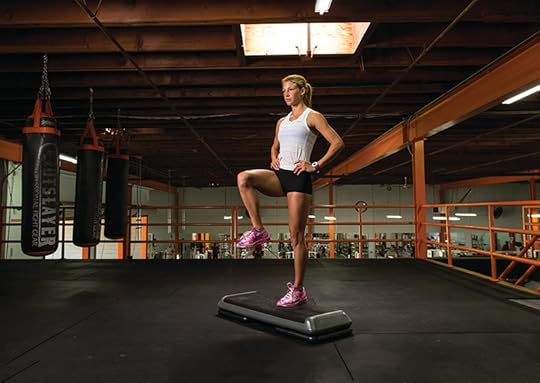
Step-ups
Balance on one foot, standing on a step or low platform, your free leg bent slightly at the knee. Lower your hips, keeping your weight on your front foot and keeping your knee in line with that same foot. Bend down just far enough to tap the ground behind you. Then straighten your bent leg while bringing your suspended leg forward, lifting the knee in front of you to waist height. Repeat. Do 5–10 reps with each leg.
Related Galleries
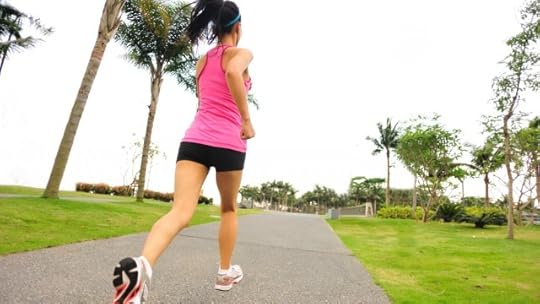
5K Training Tips For Running Rookies
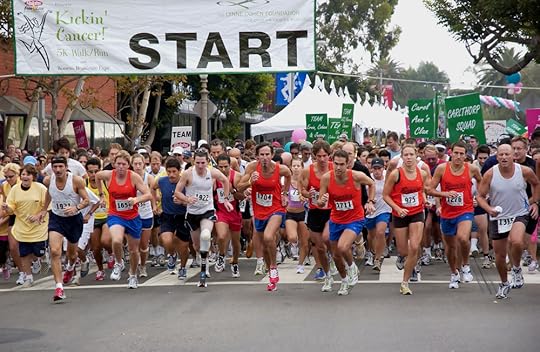
Four Interval Training Tips For Beginner 5K Runners

More Galleries
The post Run Your Fastest 5K: Resistance Training Routine appeared first on Competitor.com.
June 2, 2016
Will it GU? A Mash-Up of Energy Gels and Regular Foods
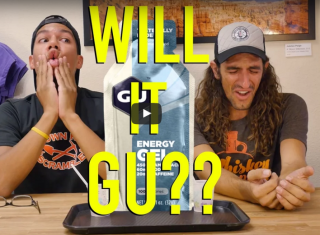
In the latest edition of the “Mountain Outpost” video series, trail runners Jamil Coury and Schuyler Hall of Phoenix-based Aravaipa Running have some fun sampling a Just Plain GU with some regular food. See what happens when they mix GU with Oreo cookies, avocado hummus, spaghetti and meatballs, sushi, hot peppers and more!
The post Will it GU? A Mash-Up of Energy Gels and Regular Foods appeared first on Competitor.com.
Shoe of the Week: Brooks Hyperion
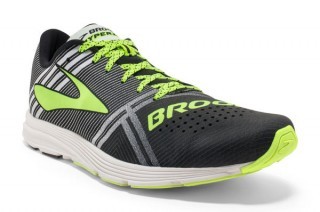
Brooks went back to the drawing board to redevelop a fast, sleek racing flat and, according to our wear-testers, it succeeded. The featherweight Hyperion feels like it’s part of your foot the moment you slip it on and lace it up. It’s a snug-fitting shoe to be sure, but the one-piece engineered stretch woven upper material and semi-firm heel counter wraps the foot and secures it down to the flexible undercarriage made of moderately soft foam (BioMoGo DNA material) and small rubber outsole segments. The sock-like fit moves with your foot and never inhibits movement and doesn’t feels at all cumbersome at fast speeds. (Our testers liked how the thinly padded tongue and flat laces completed the fit.) The Hyperion strays in its design from the T7 racer it replaced in Brooks shoe lineup (a lower heel-toe offset and a straighter last) and there are shades of the now-defunct Brooks Green Silence racing flat from a few years ago. In speed sessions, road races and tempo runs, we found this shoe to be full of “pop,” meaning that it seemed to give off some noticeable energy return (without a bouncy ride) in every stride. Aside from being fast and light, the Hyperion is built to be more versatile (from 5K to the marathon) and durable than most racing flats. It might not be enough shoe for a marathon for most recreational runners, but it’s certainly could be the tool of choice for shorter distances. (Although the shoe just hit stores on June 1, it debuted on several Brooks-sponsored athletes at the 2016 U.S. Olympic Trials Marathon on Feb. 13 in Los Angeles.)
Price: $130
Weights: 6.3 oz. (men’s 9); 5.3 oz. (women’s 7)
Heel-Toe Offset: 10mm; 22mm (heel); 12mm (forefoot)
Info: BrooksRunning.com
RELATED: Shoe of the Week—Newton Fate II
The post Shoe of the Week: Brooks Hyperion appeared first on Competitor.com.
Fuel Buzz: New HotShot Drink Aimed at Preventing Cramps
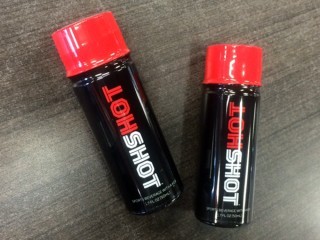
Research presented on June 2 at the American College of Sports Medicine’s Annual Meeting in Boston (and to be published in the Journal of the American Medical Athletic Association later this month) has led to the development of a new sports nutrition product aimed at preventing and treating muscle cramps. The new HotShot sports shot is aimed at stopping cramping from a neuromuscular level, not from a muscular dehydration point of view.
HotShot was developed by a Nobel Prize-winning neuroscientist and endurance athlete in collaboration with a Harvard Medical School neurobiology professor. The a 1.7-ounce sports shot is comprised of a proprietary formula of GMO-free organic ingredients with a pungent kick—a mixture that includes organic spice extracts, lime juice concentrate, pectin, sea salt, organic cane sugar, gum arabic and filtered water.
So far the brand has several high-profile athletes onboard, including elite U.S. runners Shalane Flanagan, Amy Cragg, Colleen Quigley and Evan Jager.
The company says HotShot has a formula of strong TRP activators that has shown a statistically significant reduction in muscle cramp intensity compared to placebo in two distinct muscle cramp models: 1) electrically induced muscle cramps; and 2) an innovative new model developed by Penn State University in which healthy volunteers maximally contracted one calf muscle until cramping occurred.
A field study of healthy, cramp-prone athletes who consumed HotShot 15-30 minutes before their normal training sessions showed a 50 percent or more reduction in the frequency of exercise-associated muscle cramps compared to the observed baseline frequency. In addition, the athletes reported a quicker return to training when a cramp episode did occur.
“I am not aware of any other consumer product that has demonstrated significant efficacy in mitigating muscle cramps in such a rigorous double-blind scientific study,” said Larry Kenney, Ph.D., FACSM, Marie Underhill Noll Chair in Human Performance and Professor of Physiology and Kinesiology at Penn State University.
HotShot is available online and also at select running and cycling stores in Denver/Boulder, Colo., Los Angeles and Boston for $7 per bottle or in six-pack ($35) and 12-pack ($65) boxes.
The post Fuel Buzz: New HotShot Drink Aimed at Preventing Cramps appeared first on Competitor.com.
Inspired By Famous Hecklers, Half Marathon in Tennessee Changes Its Name
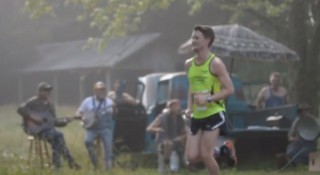
Last year, a group of locals camped out next to the Franklin Half Marathon course, playing banjos and playfully harassing runners as they ran by.
A video of those hecklers (which you can watch above) went viral—casting so much attention to the small half marathon in Leiper’s Fork, Tenn., that race officials decided to change the race’s name.
The newly named Hillbilly Half Marathon returns on Saturday, June 4, welcoming 2,000 runners and likely the “Bailey Bottom Boys” who gave the race worldwide attention.
“While the Bailey Bottom Boys are not affiliated with the race, they have promised to make their presence known to the ‘city folk in short shorts,'” the race website says.
As for the hecklers? Well, they’re probably harmless—but race officials put a disclaimer on their website just in case.
“They seem to be mostly talk, but we urge you to use extreme caution if you encounter them. Some good advice would be to stick together and, if needed, run faster,” the site says.
The post appeared first on Competitor.com.
U.S. Postal Worker to Walk/Run 100th Rock ‘n’ Roll Event in San Diego
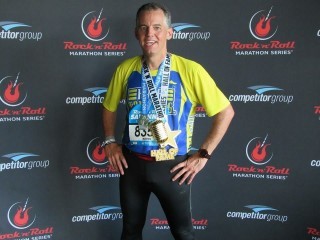
Photo: Courtesy of Rock 'n' Roll Marathon Series
By weekday, Kevin Gonzalez is your loyal U.S. Postal Service carrier, darting in and out of his truck, delivering catalogues, bills, brochures, letters and junk mail along his Florida route. By weekend, Gonzalez morphs into a globe-trotting, race-walking travel junkie, heel-striking his way anywhere and everywhere the Rock ‘n’ Roll Marathon Series travels.
Come Sunday morning in San Diego, at the birthplace of the Rock ‘n’ Roll brand, Gonzalez will squeeze into the corrals with more than 25,000 other runners, walkers and wheelchair athletes. At the race’s new Waterfont Park finish overlooking the San Diego Bay, Gonzalez will break his own personalized finish-line tape.
This Suja Rock ‘n’ Roll San Diego Half Marathon will be Gonzalez’s 100th Rock ‘n’ Roll event. The 43-year-old from Wellington, Fla., just outside of West Palm Beach, will wear bib number 100 to commemorate the achievement, in which all but two races have been half marathons.
“He’s as loyal as you could ever find,” says Competitor Group vice president Tracy Sundlun, “It’s an honor to have anybody believe in your brand, believe in your product to that degree.”
And to think Gonzalez nearly quit before he ever got started.
Gonzalez ran cross country at North Miami Beach High, but never made it on the varsity team. By his senior year, with a deep crop of more talented runners, he didn’t try out for the team. But he kept running and by his early 20s was a regular on the duathlon circuit, clocking sub-21-minute 5Ks.
His weight then: 145 pounds.
Fast forward about 15 years to 2009. Gonzalez had been married, divorced, was working for the Postal Service and longed to rediscover the athlete within. By then, he weighed in at 225 pounds.
“I started running again, but wasn’t at the level I wanted to be,” he recalls.
With unrealistic expectations—and flab flopping around his waist—Gonzalez absorbed a physical and emotional beating. “My knees couldn’t take it,” he says. “It was tough on me. It wasn’t fun. I basically gave up.”
But a postal friend told him that the long-distance running culture had changed. You no longer had to feel ostracized if it took you longer than three hours to cover 26.2 miles. The Leukemia & Lymphoma Society had raised hundreds of millions of dollars, much of it by men and women walking 13.1 and 26.2 miles.
The postal friend said Gonzalez should consider walking a half marathon. He signed up for the 2010 Rock ‘n’ Roll Arizona Half Marathon.
While he was training for the race, Gonzalez was inspired by George Clooney’s “Up In The Air” lead, a man who racked up more than one million air miles traveling for work. “I was going to focus on, instead of material things, on life experiences,” Gonzalez explains.
He didn’t tell family members about his plans, breaking the news to his father the day before leaving for Arizona. “I remember the look on his face and he told me, ‘You’re crazy,’” Gonzalez recalls.
Save for consuming too much water and losing minutes at a portable bathroom, which prevented him from breaking 3 hours (he finished in 3:06), Gonzalez savored his desert experience.
“You know what,” he told himself, “that wasn’t a bad day.”
Six weeks later, he signed up for Rock ‘n’ Roll New Orleans, lopped 12 minutes off his time, and the man was hooked on the Rock ‘n’ Roll Marathon Series. He walked all 14 races in the series that year, capping it off on the Las Vegas Strip, at night, in November.
By Vegas, he says, “I sort of became a household name [with people at Competitor Group]. That’s when people started to notice me.”
Gonzalez also walked at Rock ‘n’ Roll’s first international race, in Edinburgh, Scotland, on April 15, 2012. From Edinburgh, he hopped on a train and raced seven days later in Madrid.
He remembers friendly Spanish spectators shouting “Animo! Animo!” “Faster! Faster!”
Now in his seventh year of following the Rock ‘n’ Roll brand and bands, Gonzalez has laced up his walking shoes in Vancouver, British Columbia, Lisbon, Portugal, Dublin, Montreal, Vancouver and Mexico City. Domestically, he has covered all four corners of the United States—Seattle in the northwest, San Diego in the southwest, Brooklyn in the northeast and Miami in the southeast—and all the races in between.
In 2015, Joe Harris of Virginia became the first person to complete 100 Rock ‘n’ Roll races. But according to Sundlun, Gonzalez one-ups Harris in one category: He’s the only person to have raced at every Rock ‘n’ Roll Marathon Series venue.
Those “experiences” Gonzalez decided to chase instead of material goods? He toured the streets at Pike Place Market in Seattle, watching fishermen entertainingly toss their wares. He took in the Alamo in San Antonio, sipped on a Guinness in Dublin, stood bug-eyed near the top of the 108-story Willis Tower in Chicago. He has toured the Beatles Museum in Liverpool, and walked across the Golden Gate Bridge in San Francisco.
How does a man see and walk the world on a postal carrier’s salary? Frugally. Having flown more than 1.4 million miles (nearly 50 percent of those miles accrued during the past seven years), Gonzalez knows how to work the air-miles game, and he stays at budget motels. It also helps that he’s single with no children.
“But I am available,” he says, notifying females who run/walk the Rock ‘n’ Roll circuit.
As for that guy who weighed 225 pounds when he embarked on this journey back in 2009? Gonzalez weighs a svelte 179 now. Sundlun adds, “He looks like an athlete.”
The post U.S. Postal Worker to Walk/Run 100th Rock ‘n’ Roll Event in San Diego appeared first on Competitor.com.
Out There: Your Handy Race Day Glossary
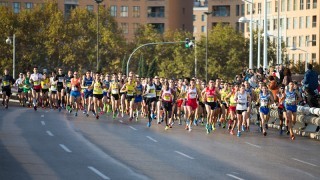
This week, I found myself translating for a new runner. Her first race is this weekend, and she wasn’t sure what the race instructions meant by “seeding for the corral.”
At first, I scoffed—isn’t it obvious? But then I looked at her face—her confused, slightly scared face—and realized it really wasn’t obvious at all. Though it’s been years since I was a new runner, I can recall being just as confused about the terminology used in the sport: bandit, kick, and bonk were words I associated with robbers, soccer, and the horizontal mambo, not marathons. Yet runners throw them around all the time, along with phrases that make no sense, like “farmer blow.” What the hell is a farmer blow, and does it have anything to do with that crop dusting you were talking about earlier?
Runners may be speaking English, but it’s still a whole different language. That said, I’ve gathered common terms used in association with race day – be it race guides or the lingo of the runners themselves – for a simple glossary. Have fun, get those negative splits, and don’t hit the dirt!
Aid Station n. Stations along the race course to load up on fluids, gels, and volunteers well-versed in the art of lying: “You look great! You’re almost to the finish! No, you don’t smell bad at all!”
Bandit n. One who steals from a race by running the event without paying registration fees. An excellent way to cement one’s status as a douchecanoe.
Bonked v. Fatigued, hammered, knackered, “hitting the wall.” A complete depletion of energy and brain cells. Not to be confused with the British usage of “bonk,” which describes something a hell of a lot more fun.
Boxing v. To impede the progress of fellow runners by blocking their path. Note: deliberate boxing is punishable with a sharp elbow to the ribs, followed by name-calling.
Chafing v. The cause of 99 percent of blood-curdling screams in the shower. (Spiders and Norman Bates are behind the remaining 1 percent.)
Coffee Klatch n. A chatty group walking three or more abreast, oblivious to runners trying to pass.
Corral n. An attempt to organize athletes by pace at the starting line. Usually ignored by overly ambitious racers and the Coffee Klatch.
Crop Dusting v. Releasing a noxious gas from one’s bum while in the vicinity of other runners. Should only be used for emergencies and/or revenge.
Dropped v. Result of failure to keep up with runners in the pack. Sometimes preceded by insults to the dropped runner’s fitness, intelligence, and/or mother
Elite n. A select group of high-performing runners. Term has been appropriated in recent years by mid-pack runners who cite sponsorships and Twitter followers to leverage discounts and preferential treatment at races.
Farmer Blow n. A forceful, sinus-clearing expulsion from the nostril without the use of tissues. Also known as a “snot rocket.” Impressive when performed successfully; ectoplasmic when not.
Ghost Runner n. A late-race hallucination of a runner on your heels who seems to disappear every time you look over your shoulder. The recipient of varied and creative curse words.
Hit the Dirt v. To tumble, to trip, to eat it, to have a yard sale, to go ass over teakettle. When it happens, just remember: we’re laughing with you, not at you.
Hydration Belt n. A Velcro waistpack containing pockets for fluids, snacks, and other race-day needs. Don’t you dare call it a fanny pack. Fanny packs are for dweebs.
Kick v. A surge of speed in the final portion of the race. Sometimes performed to pass someone in the finish chute for the win, but mostly utilized as a form of peacocking.
Negative Splits v. Running the second half of a race faster than the first half. Requires patience and intelligence, two traits that seem to disappear at the sound of a starting pistol.
Pace Bunny n. One who voluntarily leads a runner (or group of runners) at a certain, consistent pace during an event. The most motivating and, ideally, aesthetically pleasing rear ends in the sport.
Peacock v. Making a deliberate and pretentious display of one’s accomplishments, usually through braggadocio and one-upmanship: “I was going to check out the race expo, but there was a group of Ironman finishers peacocking in front of the entrance.”
Run Runs n. The unexpected and urgent need to exorcise your demons in a port-o-john before or during a race.
Seeding v. A method of assigning placement in corrals by asking runners for their estimated finish times. A good way to assess a runner’s grasp of reality (or lack thereof).
Shower Beer n. A post-race libation consumed while standing under a stream of warm water. Usually code for “Let’s pretend that run never happened.”
Static Stretching v. Something only performed by runners while posing for the covers of fitness magazines.
Swag n. Free samples and tchotchkes handed out by sponsors and manufacturers at race expos. Often snatched up with good intentions, only to sit in closets and car trunks for years.
Tail-End Charlie n. Support vehicle in a race that picks up injured, abandoned, or cut-off runners. Also known as a sag wagon, sweep, ship of sadness, or BOP (Back-Of-Pack) bus.
Do you have a term to add to the list? Tweet us at @RunCompetitor or share on Competitor’s Facebook Page!
* * *
About The Author:
Susan Lacke does 5Ks, Ironman Triathlons and everything in between to justify her love for cupcakes (yes, she eats that many). Susan lives and trains in Salt Lake City, Utah with three animals: A labrador, a cattle dog, and a freakishly tall triathlete husband. She claims to be of sound mind, though this has yet to be substantiated by a medical expert. Follow her on Twitter: @SusanLacke
The post Out There: Your Handy Race Day Glossary appeared first on Competitor.com.
Ryan Hall's Blog
- Ryan Hall's profile
- 21 followers



